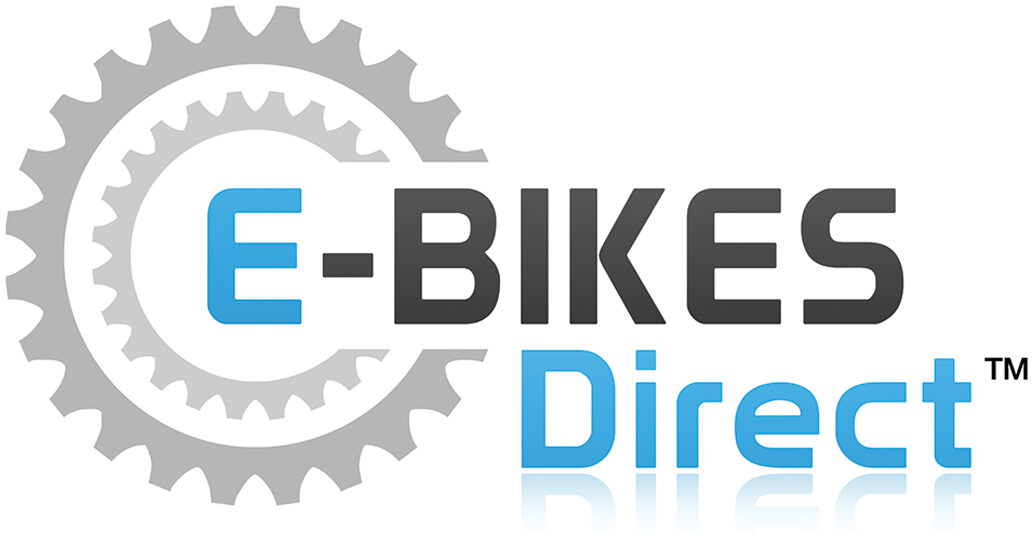A Helpful Guide to Electric Bikes from The UK’s No. 1 for Electric Bikes & Tricycles
We understand that the world of Electric Bikes can be confusing and overwhelming to anyone looking to purchase their first Electric Bike. So here at Electric Bikes Direct, we have compiled a directory of questions, queries, and quandaries to help you find the answer.
Does my new Electric Bike come with a warranty?
Does my Ex-Demo Electric Bike come with a warranty?
What size Electric Bike do I need?
How long will my new Electric Bike take to arrive?
Will I need to build my new Electric Bike?
Purchasing an Electric Bike through a Cycle to Work Scheme…
What is the Cycle to Work Scheme?
Are Electric Bikes legal on UK roads?
Electric Bike Power and Speed Limits
Electric Bike Age and Licence Requirements
Electric Bike Insurance and Registration
Which Electric Bike is best for me?
Can I ride an Electric Bike on the road?
Are there limitations or restrictions on where I can ride an Electric Bike?
How much does an Electric Bike cost?
How to maintain an Electric Bike battery
Buying an Electric Bike from Electric Bikes Direct
Does my new Electric Bike come with a warranty?
Yes! All our new Electric Bikes come with a minimum of 12 months warranty, this can vary depending on the brand of Electric Bike you have purchased. Brands such as Basis, Dallingridge, Cube, Merida, Lapierre, Raleigh, Forme, Wisper and more are all included.
Does my Ex-Demo Electric Bike include a warranty?
Yes! Our excellent value ex-demo Electric Bike stock are all supplied with a 6 month warranty.
What size Electric Bike do I need?
Choosing the right size for an Electric Bike is crucial for your comfort, safety, and overall riding experience. Here’s a general guide to help you find the appropriate size:
- Frame Size: The frame size is the most important factor in determining the right fit for your Electric Bike. It’s usually measured in inches or centimeters and refers to the distance from the center of the bottom bracket to the top of the seat tube (where the seat post enters the frame). The right frame size ensures proper leg extension and comfortable reach to the handlebars.
- Height Consideration: Your height is a good starting point for determining frame size, but it’s not the only factor. Different manufacturers might have slightly different size recommendations, so always refer to the specific brand’s sizing chart if available.
- Standover Height: This is the distance between the top tube of the frame and the ground when you straddle the bike with your feet flat. Aim for a standover height that allows you to comfortably stand over the bike without touching the top tube.
- Top Tube Length: The length of the top tube affects your reach to the handlebars. A longer top tube provides a more stretched-out riding position, while a shorter top tube offers a more upright and comfortable position.
- Reach and Stack: Reach refers to the horizontal distance between the bottom bracket and the top of the head tube, while stack is the vertical distance between these two points. These measurements can help you understand the bike’s overall geometry and how it will affect your riding posture.
- Handlebar Height: Some Electric Bikes have adjustable handlebar stems that can be raised or lowered to fine-tune your riding position. This can be useful for achieving the most comfortable setup.
- Saddle Position: The saddle height and fore/aft position are crucial for proper leg extension and comfortable reach to the handlebars. Adjusting the saddle correctly is essential for efficient pedaling and minimizing strain on your knees.
- Test Rides: We offer customers test rides on a wide selection of bikes at our showroom and test centre, based within the beautiful surroundings of Bodiam, East Sussex. This hands-on experience will help you understand how each size feels and which one suits you best.
- Let Us Help: If you’re unsure about sizing or have unique body proportions, consider visiting our showroom and test centre. Experienced staff can provide personalized advice based on your measurements and riding preferences.
Remember that finding the right Electric Bike size is not just about the numbers; it’s about finding a bike that feels comfortable and suits your riding style. Take your time, gather information, and prioritize your comfort and safety on the road.
Can I “try before I buy”?
You sure can! We have an all-terrain test track and a pre-planned, downloadable route to try.
Our test route takes you on a journey through the beautiful Bodiam countryside, passing by the historic Bodiam Castle and the most excellent Castle Inn pub. Both are great places to stop off and explore during a test ride. The best thing about it? If you decide to purchase an Electric Bike after enjoying a meal at The Castle Inn – we will cover the cost of your lunch providing you have a purchase receipt.
We have a range of over 30 Electric Bikes of various styles in our Bodiam showroom, ready to be put through their paces within our beautiful surroundings. Safety equipment is available should you wish.
If you would like to book a test ride or personally speak with one of our staff, please call 01580 830959 or email sales@e-bikesdirect.co.uk.
How long will my new Electric Bike take to arrive?
If the Electric Bike you have purchased is in stock, we will process and begin building it. Once built, we will run all relevant checks to ensure each electric bike is running in perfect order. After that we will package the Electric Bike in our specialist boxes and dispatch it the next working day straight to you.
Some of our stock is held externally so we may need to transfer the bike in before building it for you.
Rest assured that we will aim to get your order to you as soon as possible.
Will I need to build my new Electric Bike?
Your bike is in good hands! Our team of Electric Bike mechanics will build 95% of your new bike before it gets sent to your address. Upon arrival, simple attachment of the pedals and the straightening of the handlebar will be required.
If you are unable to complete these steps yourself, we would recommend contacting a professional to complete the build. Either in a local bike shop, or a mobile bike mechanic.
Purchasing an Electric Bike through a Cycle to Work Scheme…
Please note: Cycle to Work vouchers cannot always be processed at discounted prices as shown on the site, so in certain circumstances, there may be a small percentage upcharge on sale prices. If you would like further clarity on pricing relating to a specific scheme, please email our sales team with details of the bike you are interested in, along with your company’s affiliated scheme and we can advise in this respect for you.
In a nut shell: The employer buys the bike for the employee, the employer claims back the VAT and then your employees pay you back out of gross pay rather than net pay, so they benefit at no loss to yourself. The below link shows you how to account for this:
Click Here For The Department For Transport Website
Check Out Our Dedicated Cycle To Work Scheme Page Here!
What is the Cycle to Work Scheme?
The Cycle to Work scheme is a government-backed initiative in the UK, designed to encourage people to use bicycles for commuting to work. The scheme allows employees to purchase a new bicycle and related accessories through their employer, often at a significantly discounted price, while spreading the cost over a set period of time. The main benefits of the scheme include promoting healthier lifestyles, reducing traffic congestion, and decreasing environmental impact.
Here’s how the Cycle to Work scheme generally works:
- Eligibility: Most employed individuals are eligible for the scheme, but it’s important to check with your employer to confirm if they participate and if you meet their specific eligibility criteria.
- Choose a Bike and Accessories: You select the bicycle and any related accessories you want to purchase. Accessories can include items like helmets, lights, locks, and cycling clothing. Some schemes have limits on the total cost of the bike and accessories.
- Agreement with Employer: Your employer needs to be registered with a Cycle to Work provider or scheme, such as Cyclescheme or Cycle Solutions. They will set up an agreement with the provider on your behalf.
- Salary Sacrifice: Under the scheme, you agree to give up a portion of your pre-tax salary to cover the cost of the bike and accessories. This is known as a salary sacrifice. As a result, you pay less income tax and National Insurance contributions on the sacrificed amount.
- Hire Period: Typically, the bike is “hired” by you from your employer for a set period, usually around 12 to 18 months. During this time, you will make regular payments from your pre-tax salary to cover the cost of the bike and accessories.
- End of Hire Period: At the end of the hire period, you usually have the option to:
- Return the Bike: You can return the bike and accessories to your employer.
- Extend the Agreement: Some schemes allow you to extend the hire period, often for a nominal fee.
- Ownership Options: Depending on the scheme, you might be able to take ownership of the bike by paying a final payment. This payment is typically calculated based on the market value of the bike at the end of the hire period.
- Tax Efficiency: Throughout the hire period, you save money on income tax and National Insurance contributions because the payments are deducted from your salary before these deductions are calculated.
It is important to note that each Cycle to Work scheme might have slightly different terms and procedures, so its essential to thoroughly understand the details of the scheme offered by your employer. Additionally, the scheme’s availability and regulations may vary by country, so be sure to check with the relevant government or program provider in your region for the most accurate and up-to-date information.
Are Electric Bikes legal on UK roads?
Electric Bikes are legal to use on the roads in the UK without a licence. But it must meet certain criteria to ensure all rules and regulations are adhered to.
These electric bikes are known as ‘electrically assisted pedal cycles’ (EAPCs). You do not need a licence to ride one and it does not need to be registered, taxed or insured.
Electric Bike Power and Speed Limits:
Electric Bikes are divided into two main categories based on their power and speed capabilities.
Class 1 and Class 2 Electric Bikes (Pedal Assist): These Electric Bikes provide assistance only when the rider pedals and have a maximum power of 250 watts. The motor assistance cuts off at 15.5 mph (25 km/h).
Class 3 Electric Bikes (Throttle-Controlled): These Electric Bikes can be powered by a throttle without pedaling and have a maximum power of 250 watts. The motor assistance cuts off at 15.5 mph (25 km/h). Class 3 Electric Bikes may need to be registered as a “motor vehicle” and be covered by an insurance policy if they meet certain criteria. We encourage you to seek advice before purchasing a Class 3 Electric Bike, to ensure you do not break the law while riding.
Electric Bike Age and Licence Requirements:
You can ride Class 1 and Class 2 Electric Bikes without a license if you are over 14 years of age.
Helmets and Safety:
While wearing a helmet is not legally required when riding an Electric Bike, it is strongly recommended for safety purposes.
Electric Bike Insurance and Registration:
Electric Bikes that meet the standard pedal-assist criteria (Class 1 and Class 2) are not required to have insurance or be registered.
Electric Bike Road Use:
Electric Bikes can generally be used on roads, cycle paths, and cycle lanes. They should not be used on pavements.
Can I buy an Electric Bike that uses a throttle? (Class 3 Electric Bikes – Throttle-Controlled)
Wisper Electric Bikes have made special arrangements with the DVSA to have their bikes tested and Type Approved as 250W L1e Low Powered Mopeds.
This means that Wisper Traditional, Tailwind and Wayfarer hub motor driven bikes are now available with a fully legal twist grip or thumb throttle option, powering our bikes up to 15.5mph without the need to pedal. You do not need insurance or tax to ride these bikes and they can be ridden on all the places you can ride a standard pushbike.
Which Electric Bike is best for me?
With such a large choice of styles, sizes and brands – choosing which Electric Bike suits you best can be overwhelming.
There are several styles of Electric Bikes, each designed for specific purposes and riding styles. So to give you a helping hand, we have put together an array of options to consider below, featuring some of the most common types of Electric Bikes:
- City/Commuter Electric Bikes:
- Designed for urban commuting and short trips.
- Upright riding position for comfort.
- Often equipped with fenders, lights, racks, and panniers for utility.
- Smooth tires suitable for paved roads.
- Here is an example – Basis Dorchester Electric City Bike
- Mountain Electric Bikes (e-MTB):
- Built for off-road trails and mountainous terrain.
- Features suspension systems (front, full, or rigid) to handle rough terrain.
- Wide, knobby tires for better traction.
- Powerful motors and rugged construction.
- Here’s an example – Basis Beacon E-MTB
- Road Electric Bikes:
- Designed for high-speed riding on roads and paved surfaces.
- Drop handlebars for aerodynamics.
- Lightweight construction for efficiency.
- Generally more minimalist in terms of features.
- Here is an example – Lapierre eSensium 3.2 Electric Road Bike
- Hybrid Electric Bikes:
- Blend of city and mountain Electric Bikes, suitable for a variety of terrains.
- Versatile and comfortable for both commuting and leisure rides.
- Here is an example – Basis Protocol Electric Hybrid Bike
- Folding Electric Bikes:
- Compact design that can be folded for easy storage and transport.
- Great for commuting and travelers with limited space.
- Here is an example – Basis Osprey Folding Electric Bike
- Cargo Electric Bikes:
- Designed to carry heavy loads, such as groceries, kids, or cargo.
- Equipped with extended rear racks or front cargo boxes.
- Suitable for families and urban utility.
- Here is an example – AMCargoBikes Electric Cargo Bikes
- Fat Tire Electric Bikes:
- Extra-wide tires for enhanced stability and traction on challenging terrains.
- Often used for sand, snow, or off-road trails.
- Here is an example – RooDog Rogue Fat Tyre Electric Bike
- Step-Through Electric Bikes:
- Easy to mount and dismount, making them suitable for riders with mobility issues or who prefer a more relaxed riding position.
- Here’s an example – Dallingridge Harlow Step Through Hybrid Electric Bike
- Electric Trikes:
- Three-wheeled Electric Bikes for added stability and balance.
- Suitable for riders who may have difficulty balancing on two wheels.
- Here is an example – AMCargoBikes Low Step Electric Tricycle
- Touring Electric Bikes:
- Built for long-distance touring and exploration.
- Equipped with features like racks, panniers, and comfortable seating.
- Here is an example – Dallingridge Malvern Hybrid Trekking Electric Bike
Remember that Electric Bike models within each category can vary widely in terms of features, specifications, and performance. It’s important to consider your specific needs and preferences when choosing the right type of Electric Bike for you. Our sales team will be glad to discuss and advise towards the most suitable electric bike for you.
Can I ride an Electric Bike on the road?
Yes, you can ride an electric bike on the road in the UK, as long as it meets certain legal requirements. Here in the UK, electric bikes are classified as Electrically Assisted Pedal Cycles (EAPCs) and are subject to specific regulations:
- Power Limit: The motor of the Electric Bike must have a maximum power output of 250 watts (0.25 kW).
- Pedal Assistance: The motor should only provide assistance when you are pedaling. It should not provide assistance if you’re not actively pedaling.
- Speed Limit: The motor assistance should cut off when the Electric Bike reaches a speed of 25 km/h (15.5 mph). You can still pedal beyond this speed, but the motor assistance will not continue.
- Age Limit: You must be at least 14 years old to ride an electric bike on the road.
- Insurance and License: You do not need a license or insurance to ride an electric bike on the road.
- Helmet: While not legally required, it is recommended to wear a helmet for safety.
- Lighting and Reflectors: You should have appropriate lighting (front and rear lights) and reflectors if you’re riding your Electric Bike in the dark.
- Number Plate: You do not need a number plate for your electric bike.
It is important to note that these regulations might change, and it is always a good idea to check the latest information from official sources before riding your Electric Bike on the road in the UK. Additionally, there are different rules for more powerful electric vehicles that might not qualify as EAPCs, such as electric mopeds or scooters.
Are there limitations or restrictions on where I can ride an Electric Bike?
First and foremost, it’s important to note that Electric Bikes in the UK are considered a type of bicycle and are subject to the same laws and regulations as traditional bicycles. This means that they can be ridden on bike paths, cycle lanes, and roads, but are not allowed on Pavements.
In the UK, there are specific places where you may be restricted from riding an electric bike (EAPC):
- Motorways and Most A-Roads: Electric bikes are not allowed on motorways or most A-roads (major roads with high-speed limits). These roads are typically restricted to vehicles that can maintain higher speeds.
- Pavements: You should not ride your electric bike on the pavement (sidewalk) unless it has been adapted to meet certain criteria and is classified as a “mobility scooter.” This typically applies to people with mobility disabilities.
- Pedestrian Zones: Pedestrian-only zones, such as busy shopping areas or town centers, may not allow electric bikes. These areas are designated for pedestrians only.
- Footpaths: Footpaths, which are intended for pedestrians only, are not suitable for electric bike use.
Always remember to follow local signage, obey traffic regulations, and respect the rules of the specific area you are in. Regulations and restrictions can vary between different regions and local authorities, so it’s important to stay informed and be aware of where you can and cannot ride your electric bike.
How much does an Electric Bike cost?
Electric bikes are designed for a variety of different applications. Some are designed to be a folding commuter bike, others as e-MTBs for bombing downhill through the woods, and a few as cargo bikes designed to carry large items, kids or even pets!
The cost of electric bikes can vary widely based on factors such as brand, quality, features, and specifications.
- Budget Range: Budget Electric Bikes with basic features might start around £600 to £1200. Generally these Electric Bikes have simpler controls, a shorter range and budget friendly components. Bikes such as the excellent value Basis and Dallingridge ranges.
- Mid-Range: Electric Bikes with better features, build quality, and more powerful motors range from £1200 to £3000. This is where you will find a good balance between price and performance, along with higher level of components and design. Bikes from brands such as the well equipped ranges from Raleigh and Crussis.
- High-End: Premium Electric Bikes with top-of-the-line components, advanced technology, and powerful motors can go well beyond £3000 – potentially reaching £5,000 or more. We supply a sizeable collection of these brands such as Lapierre and Cube.
- Specialty or Performance Electric Bikes: If you are looking at specialized Electric Bikes like high-performance mountain Electric Bikes, cargo Electric Bikes, or fat tire Electric Bikes, the prices can vary greatly. These can range from £4000 to £10,000 or even more, depending on the brand and features. Brands such as Merida and Haibike often feature in this category.
Yearly advancements in technology, materials and changes in manufacturing costs can affect either ends of the pricing scale. Newer technology will be higher priced, and seasoned technology will become more accessible with dropping prices. Which is a benefit to all!
How to maintain an Electric Bike battery
Maintaining your Electric Bike’s battery is essential for ensuring its longevity and optimal performance. Below are some basic practices that can help increase the lifespan of your Electric Bike battery.
- Proper Charging Practices: Follow the manufacturer’s guidelines for charging your battery. Different batteries may have specific charging requirements. Use the charger provided by the manufacturer. Avoid using chargers that are not specifically designed for your battery.
- Avoid Extreme Temperatures: Keep your battery away from extreme temperatures. High heat or freezing cold can damage the battery cells. If you are not using your bike for an extended period, store it in a temperature-controlled environment.
- Regular Use: Regularly use and charge your battery. Letting it sit unused for long periods can lead to capacity loss and reduced performance. Even if you don’t plan on riding, it is a good idea to do a short ride and partial charge every few weeks to keep the battery active.
- Partial Discharges: Lithium-ion batteries (commonly used in electric bikes) don’t have a memory effect, so you don’t need to fully discharge them before recharging. In fact, partial discharges can be better for the batteries lifespan.
- Avoid Complete Discharges: While occasional full discharges won’t necessarily harm the battery, avoiding complete discharges whenever possible can help prolong its lifespan.
- Storage: If you’re storing your electric bike for an extended period, charge the battery to around 50% before storage. Store the battery in a cool, dry place away from direct sunlight and extreme temperatures.
- Replacement: Lithium-ion batteries have a limited lifespan, usually measured in charge cycles. When you notice a significant decrease in battery performance, it might be time to consider getting a replacement battery.











